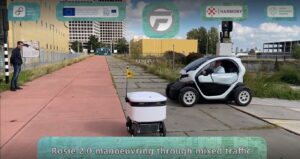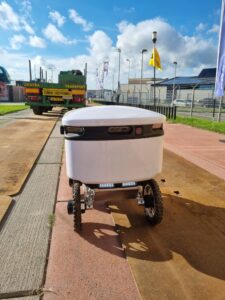Rotterdam is the second-largest city in the Netherlands and hosts Europe’s largest port and is a major logistic and economic centre situated as a node on three TEN-T corridors.
Rotterdam is a young dynamic world city which is rapidly innovating. Whether it’s the constantly changing skyline with its bold architecture, our port which is the smartest in the world or the can-do mentality of our residents. Rotterdam is a city with a distinct character, energetic and always in motion. A city of forerunners, pioneers and people with the courage and will to drive change.
The city has 650.000 inhabitants in a region of total of 2.4 million people. A very diverse group of people, with about a quarter of the people have been born somewhere other than the Netherlands. Rotterdam has 320 square kilometres of surface, both water and land. A sizeable part of this is, of course, the largest port of Europe.
HARMONY in Rotterdam
The activities in Rotterdam for HARMONY are focused on the transport of goods. An important part of the work is specifically narrowed down to urban logistics. HARMONY will:
- Engage with national and international stakeholders and citizens in co-creation labs;
- Collect primary data;
- Apply the model suite;
- Recommend updates for the spatial and transport planning strategy.
In order to support and promote the further integration of the automated vehicles (AVs) into the local mobility system, the municipality of Rotterdam needs to have a clear picture of the potential effects and impacts from the AVs integration: e.g. in terms of the economic growth, jobs market, impact on the total vehicles within city borders, infrastructure and urban space requirements, impact on the IT and public communication systems capacity. The objective of the Rotterdam co-creation lab is to understand this potential impact of the AVs integration into the local mobility system, specifically the urban freight transport component. This will be done through:
- the HARMONY modelling activities (application of the tactical freight simulator to the city logistics system of Rotterdam)
City of Rotterdam has the capacity to test Rosie 2.0, the autonomous electric delivery robot that has been used during this Harmony project to test multiple environments with other road users and vehicles and Intelligent Traffic Lights (ITL), but also with mopeds and pedestrians. The tests have been performed on Future Mobility Park and public roads.
Rosie 2.0 is able to perform well on public roads with mixed traffic situations. The robot recognises
different traffic participants, such as mopeds and cars, even when their moving speed is significantly
higher than Rosie’s (appx. 15 km/h). This demonstration was performed alongside with Future Mobility Network, Future Mobility Park and Dutch Automated Mobility.
Self-driving robots are relatively new, therefore, it has been extremely valuable to test this within the Harmony framework. The results show that these robots certainly have a future.
A group of master students from the TU Delft developed, under supervision of the TU Delft and TNO HARMONY project team, produced a report of what can be demonstrated and tested during the pilots in the Rotterdam area. Also, partners have been involved in finding test locations, creating test scenarios etc.
The use case for the tactical freight simulator is the analysis of the effects of introducing a Zero Emission zone for city logistics. Rotterdam has chosen to close a covenant with companies and other stakeholders representing the logistic landscape.
In the late spring of 2021, a co-creation lab took place, in which one of the workshops was transformed into a serious game, developed as part of HARMONY. The serious game facilitates the interactions and discussions between the engaged stakeholders. Participants from the stakeholder group of logistic service providers, as potential users of automated delivery vehicles and/or services, provides insight into their attitude regarding the transition towards zero-emission city logistics and to the role AV could play in it. This information improved the design of the physical pilot.




